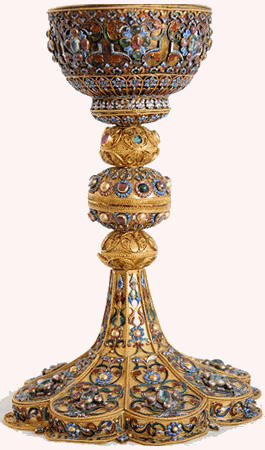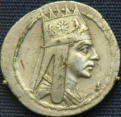

Armenian Jerusalem



St Deiniol’s church, Hawarden, Wales
In a remote corner of Wales, in a picturesque and historic parish
church in the Welsh village of Hawarden, a humble silver
chalice stands as a silent testimony to the undying gratitude of a
persecuted people.
For over 100 years, the chalice has graced the altar of the village church, St. Deiniol, lost in the maze of history and remembered only vaguely in one or other church document, a source of wonder for the Welsh worshippers who prayed at the church. Few people knew how it got there. Fewer still had any inkling what the strange inscription it bore stood for, or what foreign tongue it was inscribed in. It was a chance visit to Hawarden by a priest from the neighboring Shotton vicarage at Deeside, that provided the key to the solving of the mystery. Canon Roberts was a student of languages and the moment he saw the chalice, he became intrigued: he recognized the unusual calligraphy as Armenian but could not decipher it. And although he had no idea what the words stood for, or what the letters represented, he managed to reproduce them sufficiently accurately for them to be intelligible. His next next step was to locate somebody who knew Armenian. I was working as the press officer for the Armenian Patriarchate of Jerusalem at the time, and was the Patriarch's private secretary. By a lucky coincidence, Canon Roberts had been to Jerusalem only recently and met the Patriarch, Archbishop Torkom Manoogian, himself an avid fan of history and archaeology. Canon Roberts promptly wrote back to the Patriarch - and the mystery of the chalice was unveiled. Poring over the Welshman's imperfect rendition, Patriarch Manoogian had no difficulty deciphering the seven tell-tale words. A picture of the chalice, in solitary splendor against the backdrop of an altar, later confirmed his findings beyond the shadow of a doubt. The inscription was, in fact, in Armenian. It was a quotation of Verse 13 of the 116th Psalm: "I will lift up the cup of salvation and call on the name of the Lord." Armed with this bit of information, Canon Roberts got busy digging further into the circumstances of the chalice and its strange message. Before long, its curious story came to light. The 100-year-old chalice had been crafted by an English silversmith as a gilt to British Prime Minister William E. Gladstone for his efforts in alleviating the sufferings of the Armenian people during the Turkish genocide. Gladstone, who had retired to his home a! Hawarden Castle after having resigned as prime minister, was well aware of the plight of the Armenians around the end of the 19th Century, and saw it as a matter of personal honor and integrity that "he must give whatever support he could to the Armenian Christians in their time of oppression and need," Canon Roberts reported. "In response to the personal support given by so eminent a British statesman and churchman, at a time in his life when many would have hesitated to become involved in the affairs of another country, the Armenian community made gifts to his parish church at Hawarden in gratitude for his sympathy and assistance," Canon Roberts added. The chalice was one of those gifts. It stands only 22 cms high, and is just less than 15 cms in diameter at the outer edge of the lobes. The knob is set with six gems of a deep-red color (possibly garnets), one mounted on each face, above which the bowl rises, 10.5 cms in diameter at the lip. The base of the chalice is engraved with a cross on one of the six faces, and a six-pointed star on the remaining five, all surrounded with a pattern of engraving which rises up the stem towards the knob. The bowl is plain, except for the maker's mark and hallmark on one side, toward the lip. It had been crafted by Herbert Edwin Willis, a London silversmith, and certified as sterling silver by the London assay office in 1893. The Armenian inscription is carved on the opposite side of the bowl, between two crosses. On the underside of the base, Canon Roberts found the following inscription in English, dated December 29, 2894: "To the glory of God, in the name of the Eternal Trinity. This chalice was presented to the rector of Hawarden by the Armenians of London and Paris, on the 85th anniversary of William Ewan Gladstone, whose loving service on behalf of the persecuted Christians in Turkey they desire humbly and gratefully to acknowledge and whose life they pray Almighty God may long preserve." Another of the gifts the grateful Armenians made to Hawarden was a two- light stained glass window, situated at the eastern end of the north wall of the nave, depicting St. Bartholomew, who brought Christianity to Armenia, and St. Gregory the Illuminator, the first Catholicos (supreme religious head, or pope, of all Armenians). Carved into the sloping stone sill of the two parts of the window, there is a similar inscription, again in English, thanking Gladstone. The window was dedicated by Arakel Zadouroff of Baku, Azerbaijan. The date reads 1897—the identity of Arakel Zadouroff remains mired in mystery.























